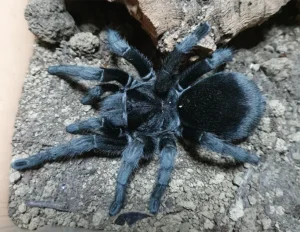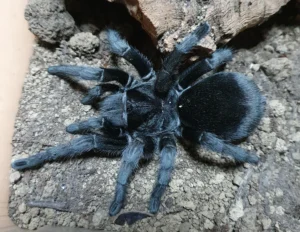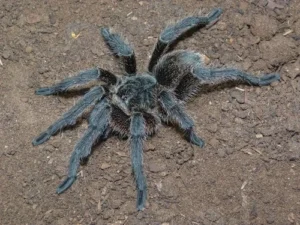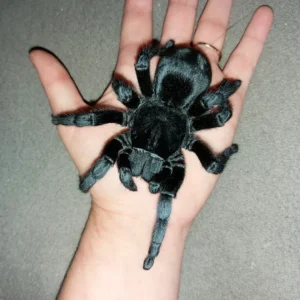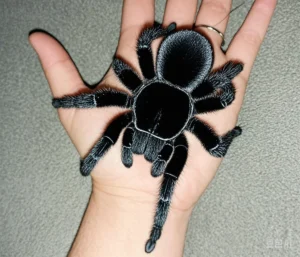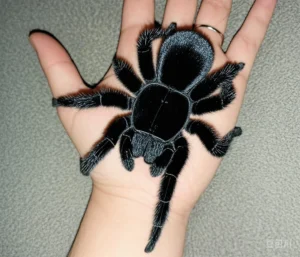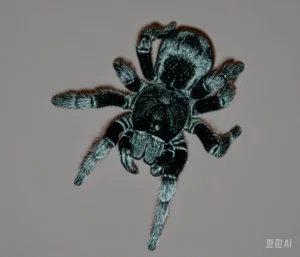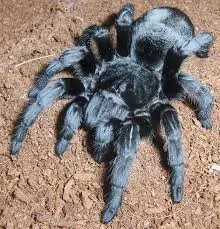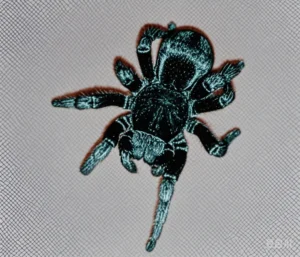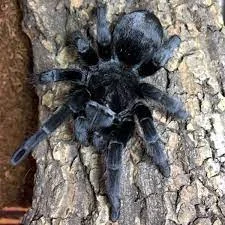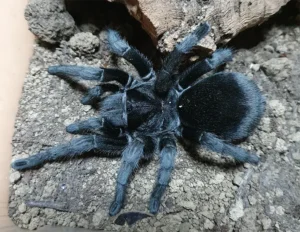Tarantula Biology
Sexual Dimorphism in Grammostola pulchra: Beyond Size—Color and Marking Differences
Introduction: Telling Males from Females
Sexual dimorphism refers to the differences between males and females of the same species beyond the sexual organs themselves. In tarantulas, including *Grammostola pulchra*, these differences can range from obvious to subtle, encompassing size, structure, coloration, and behavior, particularly after the male reaches sexual maturity.
Size Difference: The Obvious Cue
The most prominent difference, typical for many tarantula species, is size. Female *Grammostola pulchra* grow significantly larger and bulkier than males. Females can attain leg spans of 6-7 inches (15-18 cm) or more and have thick, heavy bodies. Mature males are generally smaller, with a leg span often closer to 5-6 inches (13-15 cm), and possess a much more slender, “leggy” build. This size difference becomes apparent as they approach maturity.
Coloration and Markings
In *Grammostola pulchra*, the difference in coloration between mature males and females is generally minimal compared to some other tarantula species where males might be drastically different. Both sexes boast the characteristic velvety jet-black coloration. However, some subtle differences might be observed:
- Sheen/Texture: Some keepers note that mature males might have a slightly different sheen or texture to their exoskeleton, potentially appearing slightly less intensely black or having a faint brownish or purplish hue in certain lighting, though this is subjective and not a reliable indicator.
- Abdomen Shape: Females typically have large, rounded abdomens, especially when well-fed or gravid (carrying eggs). Males have much smaller, more tapered abdomens.
Unlike species where males develop bright colors or distinct patterns upon maturity, the primary visual cue for male vs female Grammostola pulchra differences remains body shape and size, rather than dramatic color shifts.
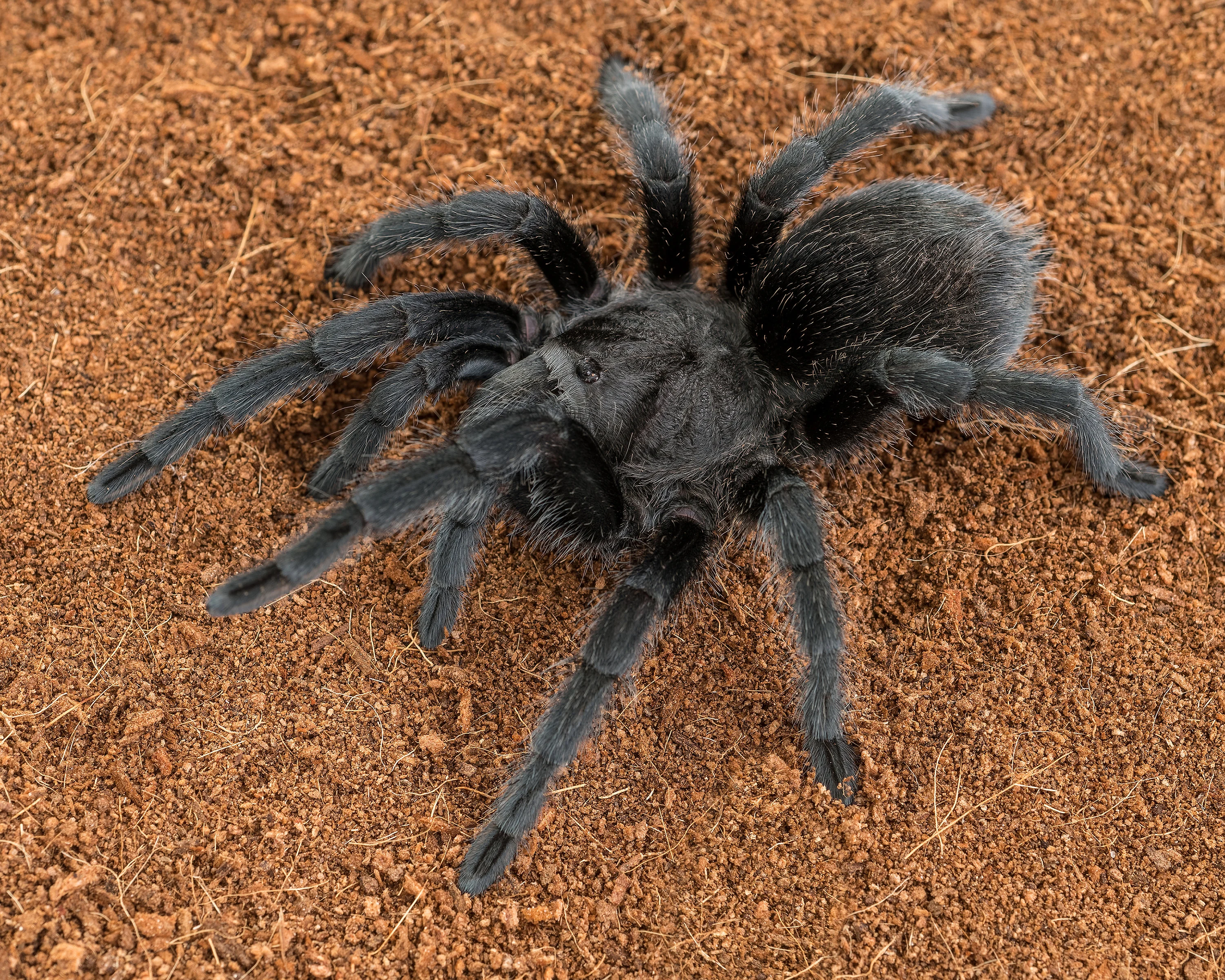
Mature Male Anatomical Differences
The most definitive differences appear when a male undergoes his ultimate (final) molt into sexual maturity. These include:
- Tibial Hooks (Spurs): Mature males develop prominent hooks or spurs on the underside of the tibia (the segment above the metatarsus) on their first pair of legs. These are used to hook onto the female’s fangs during mating to prevent being bitten.
- Emboli (Palpal Bulbs): The male’s pedipalps (the small, leg-like appendages near the mouth) become modified. The final segment (tarsus) develops into complex structures called emboli or palpal bulbs, which are used to store and transfer sperm to the female during mating. They often look like little boxing gloves.
Females lack both tibial hooks and modified palpal bulbs.
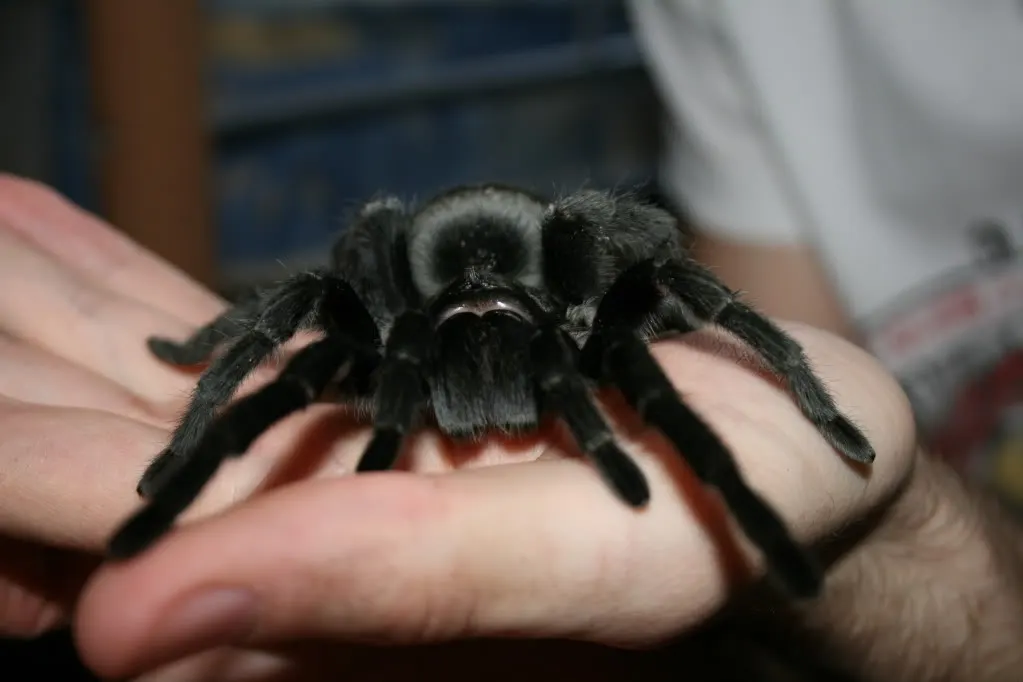
Behavioral Differences
Upon reaching maturity, male behavior changes dramatically. They often cease regular feeding, become much more active and prone to wandering (in search of females), and may display more defensive behaviors if cornered. Females generally remain more sedentary and focused on feeding and maintaining their burrow.
Lifespan Disparity
There is a significant difference in lifespan. Female *G. pulchra* are long-lived, potentially reaching 20-30 years or more in captivity with proper care. Males have a much shorter lifespan. After their ultimate molt, they typically live only 1-2 years longer, as their primary focus shifts entirely to reproduction.
Summary Table
| Feature | Mature Female | Mature Male |
|---|---|---|
| Size | Larger, bulkier body | Smaller, slender, “leggy” |
| Color | Jet black | Jet black (maybe slightly less intense) |
| Abdomen | Large, rounded | Small, tapered |
| Tibial Hooks | Absent | Present on first pair of legs |
| Palpal Bulbs | Absent (pedipalp ends normally) | Present (modified pedipalp ends) |
| Behavior | More sedentary, consistent feeder | Wanders, reduced feeding |
| Lifespan | Very long (20-30+ years) | Short post-maturity (1-2 years) |
Information based on widely accepted characteristics of tarantula sexual dimorphism and observations within the hobby.

